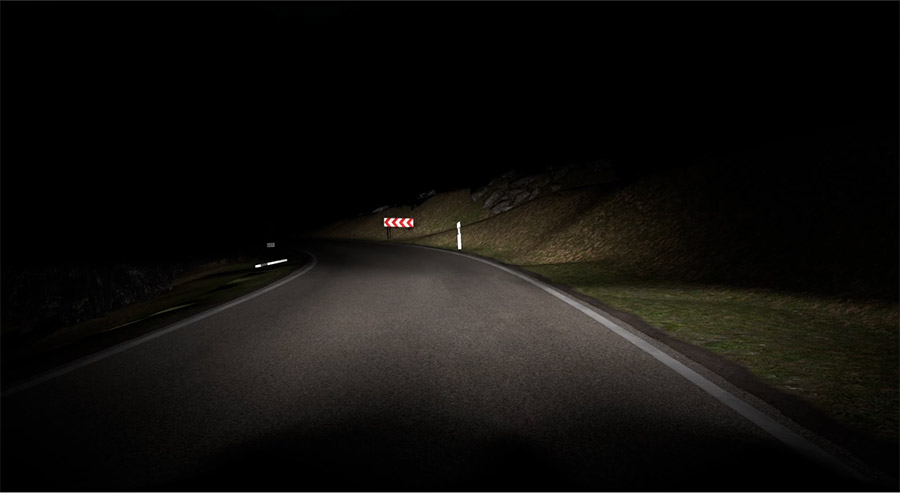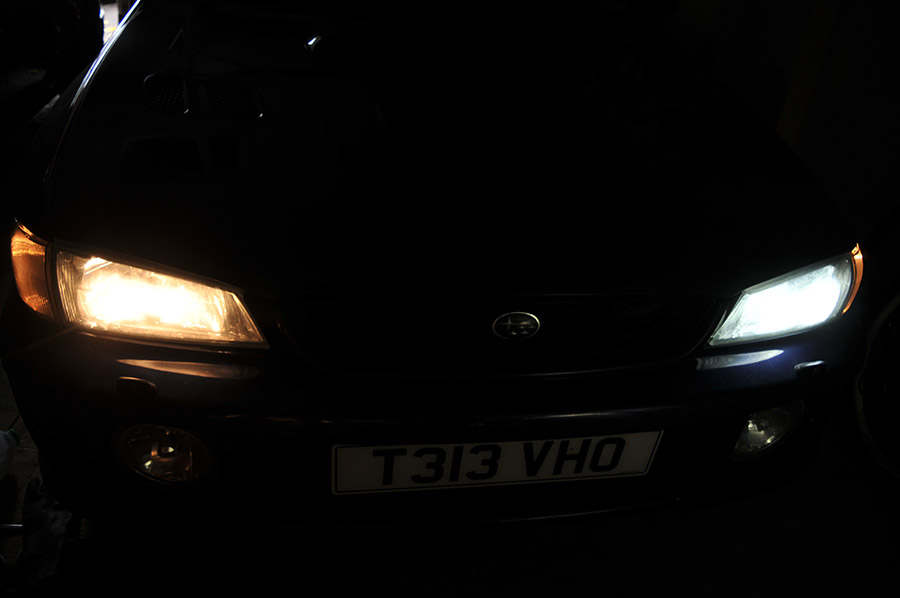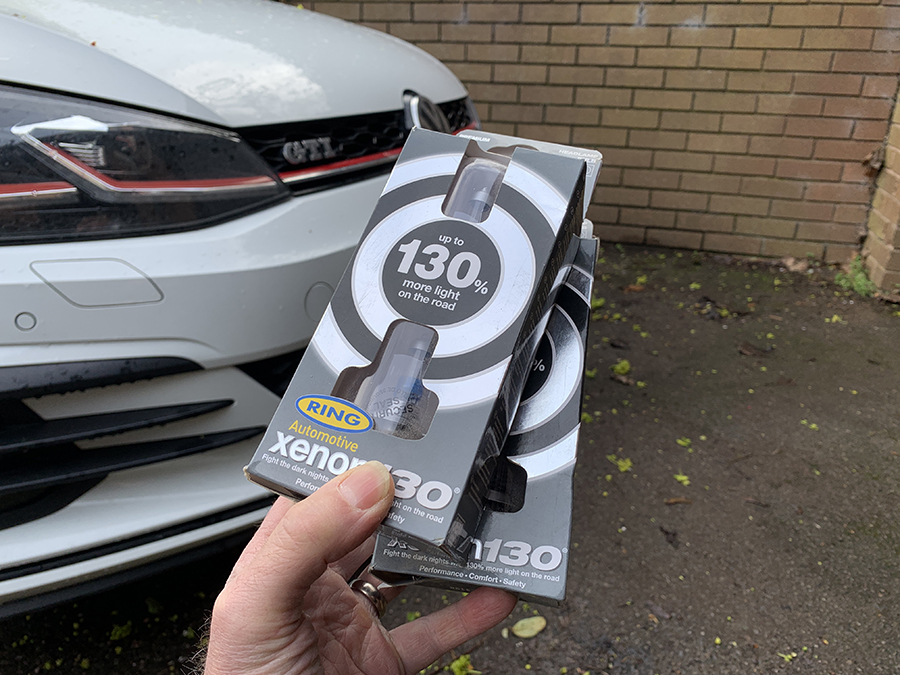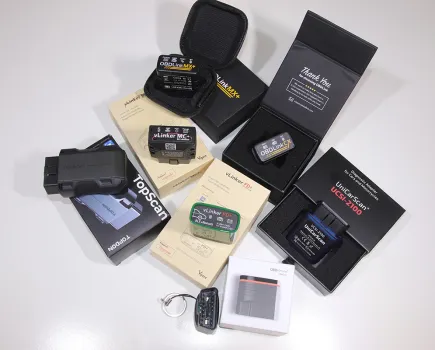Upgrade your vehicle’s lighting with our guide on how to fit car headlight bulbs. Some simple car maintenance can improve your visibility and make your car safer on the road.
If you’ve ever driven at night and noticed that one of your headlights is out, you know how important it is to replace it as soon as possible. Not only is it dangerous to drive with only one headlight, but it’s also illegal. Or, maybe your old headlight bulbs just aren’t as good as modern alternatives, and you’re looking to upgrade your car headlights to something brighter and more effective?
Either way, the good news is that replacing a car bulb is a simple and inexpensive task that you can do yourself. Here’s our step-by-step guide on how to fit car headlight bulbs.
What tools you’ll need to carry out the job
- New headlight bulb(s)
- Screwdriver (if needed)
- Clean cloth
- Gloves (optional)

Step 1: Determine the type of car headlight bulbs you need
Before you start swapping or replacing anything, first you need to determine which type of headlight bulb your car uses. There are several headlight bulbs, such as halogen, HID, and LED, and each requires a different fitting process. Also, there are different fitment styles for each. For example, Halogen bulbs come in various fitments, including the most common H1, H3, H4, and H7 types – and you need to make sure you get the correct fitment style for your car.
You can check your car’s manual or search online for the type of bulb your car uses.
Step 2: Locate the headlight assembly
Once you know the type of bulb you need, locate the headlight assembly on the car. Depending on the make and model of your car, the assembly may be behind a cover or under the bonnet. Check your car’s manual or online for specific instructions on how to access the headlight assembly.

Step 3: Remove the old bulb
Once you have access to the headlight assembly, remove the old bulb. This is usually done by either twisting it counterclockwise or removing a retaining clip and pulling the bulb out of the socket. In some cases, you may need to use a screwdriver to pry off any retaining clips or remove any screws that are physically holding the bulb in place.
Step 4: Fit the new car headlight bulbs
Take the new bulb out of the packaging and handle it carefully, avoiding touching the glass part of the bulb with your bare hands. The oil from your skin can cause the bulb to overheat and burn out prematurely. If you do touch the glass, make sure you clean it with a dry, clean cloth before installation.
Then, insert the new bulb into the socket: twist it clockwise until it clicks into place, push it into the socket, and refit any retaining clips, or refit any screws that hold it in place – basically, refitting is the reverse of the removal steps.
Be sure to test the bulb before replacing any covers or closing the bonnet.
Step 5: Repeat the Process for the Other Headlight
If you replaced the bulb on one side, it’s a good idea to replace the other side as well to ensure both headlights are equally bright. This is vitally important if you are upgrading your bulbs, as you need to ensure both left and right headlights match.
Repeat the same process for the other headlight assembly.
Step 6: Test the Headlights
Once both bulbs are installed, turn on the headlights to ensure they are both working correctly. If one of the headlights is still not working, it may be an issue with the wiring, the fuse, or even the headlight assembly itself, and you may need to seek help from a mechanic or garage. And that’s how to fit car headlight bulbs.

How do I find out what headlight bulb I need for my car?
To find out what bulb you need for your car, check the owner’s manual to see if you still have one. Alternatively, you can do an online search using your car’s make, model, and year.
The most useful sites for enthusiasts keen to fit their bulbs will be owners’ club groups; here you’ll find useful advice from fellow owners who can identify which type of bulb your car has. There are also websites and apps that can help you identify the correct bulb type for your specific vehicle – simply enter your car’s registration details and it will provide a list of suitable products that will fit your car. It often pays to double-check these though, as higher specification trim levels often have upgraded headlight bulbs, and these apps aren’t always 100 per cent accurate.
Finally, another option is to visit a garage or a mechanic who can help you select the correct bulb and may even be able to install it for you.
What should I look for when choosing new bulbs?
When choosing a headlamp bulb, you should consider factors such as budget, maximum brightness, and color temperature, as well as compatibility with your vehicle. It’s also important to make sure that the bulb meets all safety standards and legal requirements for use on the road – fancy colors may look good on the showground, but if they won’t pass an MOT you could end up in trouble with the law.
If you want to replace a faulty bulb like-for-like, then a standard bulb is probably the best option. But for owners looking to upgrade, there are several performance options from big brand companies such as Osram, Philips, Lucas, and Hella – plus many more.
If you’re unsure which type of bulb is best for you, ask around on owners’ groups or forums, or do some additional research to find the right fit for your needs.

On the left, the original Subaru Impreza halogen light bulbs. On the right, LED headlight bulbs.
What’s the difference between Halogen, HID or LED bulbs?
Halogen bulbs are the most common and affordable option. They produce a warm, yellowish light and have a moderate lifespan.
HID (High-Intensity Discharge) bulbs (also called Xenon bulbs, because they use Xenon gas) produce a bright, bluish-white light that is often preferred by drivers. They are more expensive than halogen bulbs but have a longer lifespan.
LED (Light Emitting Diode) bulbs are the most energy-efficient and longest-lasting option. They produce a bright, white light and can be customized with different colors and styles.

Is it worth upgrading your car headlight bulbs?
Of course! Upgrading your headlight bulbs can provide a number of benefits, such as improved visibility and safety while driving. With newer, brighter bulbs, you’ll be able to see further and more clearly on the road, especially in low-light conditions or bad weather. This can help you avoid hazards and react more quickly to unexpected situations.
Additionally, some newer bulbs may have a longer lifespan than older ones, meaning that you won’t have to replace them as frequently. While there is an upfront cost associated with upgrading your headlight bulbs, the benefits can be well worth it in terms of both safety and convenience. Just make sure to choose bulbs that are compatible with your vehicle and comply with legal regulations.

Is replacing my car’s headlight bulbs difficult?
Replacing a headlight bulb is a simple task that anyone can do with a little bit of patience and care. Remember to always check your car’s manual for specific instructions and safety precautions before starting any work. By following the steps outlined above, you can ensure that your car’s headlights are functioning correctly and safely.




